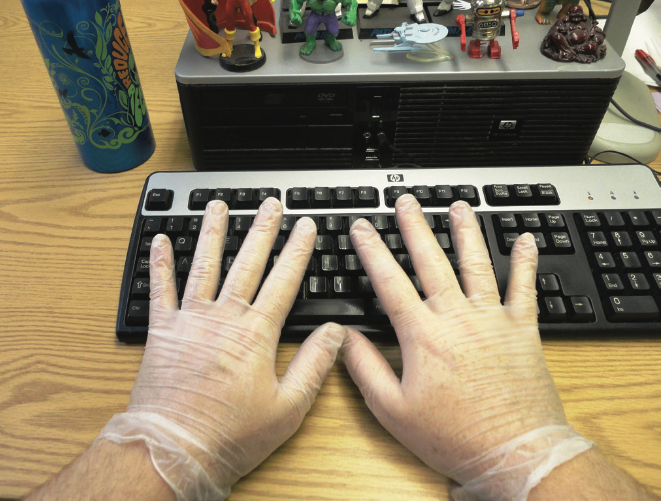34.7: Obsessive-Compulsive Disorder
- Page ID
- 77148
Have you ever had a strange thought pop into your mind, such as picturing the stranger next to you naked? Or maybe you walked past a crooked picture on the wall and couldn’t resist straightening it. Most people have occasional strange thoughts and may even engage in some “compulsive” behaviors, especially when they are stressed (Boyer & Liénard, 2008; Fullana et al., 2009). But for most people, these thoughts are nothing more than a passing oddity, and the behaviors are done (or not done) without a second thought. For someone with obsessive-compulsive disorder (OCD), however, these thoughts and compulsive behaviors don’t just come and go. Instead, strange or unusual thoughts are taken to mean something much more important and real, maybe even something dangerous or frightening. The urge to engage in some behavior, such as straightening a picture, can become so intense that it is nearly impossible not to carry it out, or causes significant anxiety if it can’t be carried out. Further, someone with OCD might become preoccupied with the possibility that the behavior wasn’t carried out to completion and feel compelled to repeat the behavior again and again, maybe several times before they are “satisfied.”
To receive a diagnosis of OCD, a person must experience obsessive thoughts and/or compulsions that seem irrational or nonsensical but that keep coming into their mind. Some examples of obsessions include doubting thoughts (such as doubting a door is locked or an appliance is turned off), thoughts of contamination (such as thinking that touching almost anything might give you cancer), or aggressive thoughts or images that are unprovoked or nonsensical. Compulsions may be carried out in an attempt to neutralize some of these thoughts, providing temporary relief from the anxiety the obsessions cause, or they may be nonsensical in and of themselves. Either way, compulsions are distinct in that they must be repetitive or excessive, the person feels “driven” to carry out the behavior, and the person feels a great deal of distress if they can’t engage in the behavior. Some examples of compulsive behaviors are repetitive washing (often in response to contamination obsessions), repetitive checking (locks, door handles, appliances, often in response to doubting obsessions), ordering and arranging things to ensure symmetry, or doing things according to a specific ritual or sequence (such as getting dressed or ready for bed in a specific order). To meet diagnostic criteria for OCD, engaging in obsessions and/or compulsions must take up a significant amount of the person’s time, at least an hour per day, and must cause significant distress or impairment in functioning. About 1.6% of the population has met criteria for OCD over the course of a lifetime (Kessler, Berglund, et al., 2005) (see TABLE 34.2.1). Whereas OCD was previously categorized as an Anxiety Disorder, in the most recent version of the DSM (DSM-5) (APA, 2013) it has been reclassified under the more specific category of Obsessive-Compulsive and Related Disorders.

People with OCD often confuse having an intrusive thought with their potential for carrying out the thought. Whereas most people when they have a strange or frightening thought are able to let it go, a person with OCD may become “stuck” on the thought and be intensely afraid that they might somehow lose control and act on it. Or worse, they believe that having the thought is just as bad as doing it. This is called thought-action fusion. For example, one patient of ours was plagued by thoughts that she would cause harm to her young daughter. She experienced intrusive images of throwing hot coffee in her daughter’s face or pushing her face underwater when she was giving her a bath. These images were so terrifying to the patient that she would no longer allow herself any physical contact with her daughter and would leave her daughter in the care of a babysitter if her husband or another family was not available to “supervise” her. In reality, the last thing she wanted to do was harm her daughter, and she had no intention or desire to act on the aggressive thoughts and images, nor does anybody with OCD act on these thoughts, but these thoughts were so horrifying to her that she made every attempt to prevent herself from the potential of carrying them out, even if it meant not being able to hold, cradle, or cuddle her daughter. These are the types of struggles people with OCD face every day.

